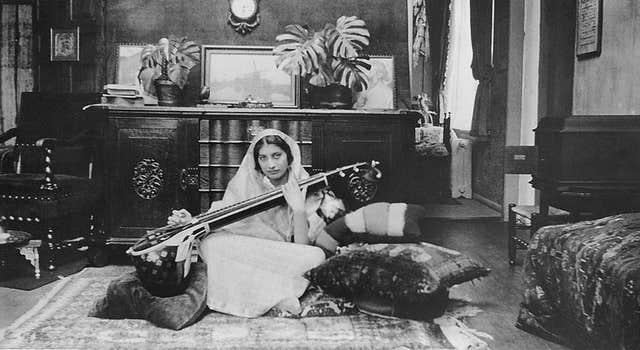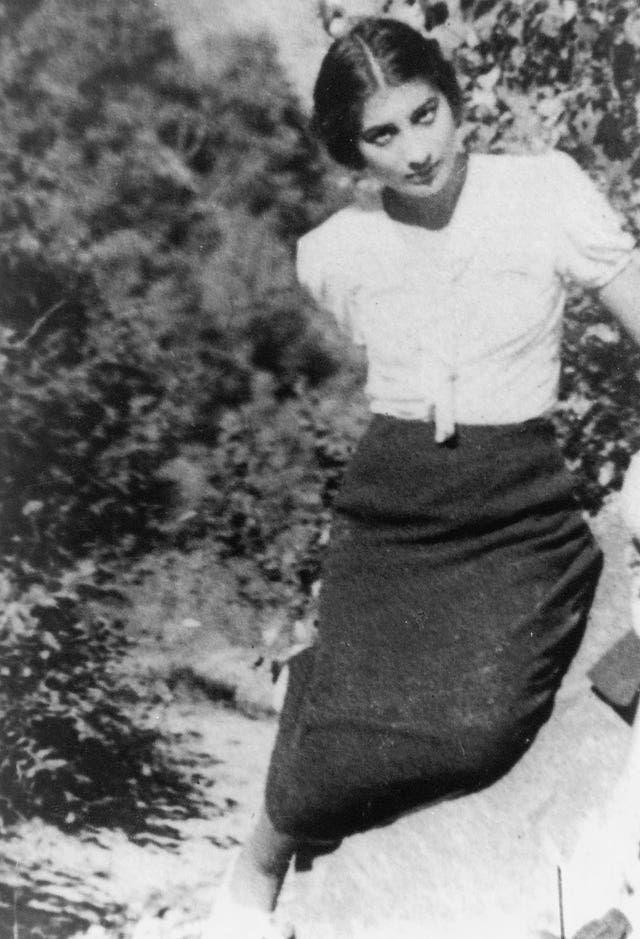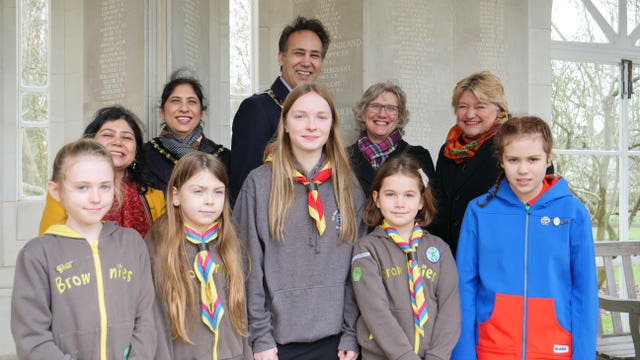Sacrifice of Moscow-born secret agent marked on International Women’s Day
The remarkable story of Second World War hero Noor Inayat-Khan is being told in a new digital exhibition.

The story of Muslim war operative and British secret agent Noor Inayat-Khan and the sacrifice she made for her country is a remarkable tale of courage and tenacity.
The first female radio operator to be sent to Nazi-occupied France, Moscow-born immigrant and Sufi princess Ms Inayat-Khan was a master of coded messages.
Armed with a false passport and a pistol, she soon became known as “Madeleine of the Resistance”, working in perilous conditions behind enemy lines.
She was captured and tortured for information but never gave anything away, and was eventually executed by the Nazis.
On Sunday, International Women’s Day, a new exhibition dedicated to promoting her inspiring legacy will be unveiled at Runnymede Air Forces Memorial.
Developed by the Commonwealth War Graves Foundation (CWGF) with the help of young women from Girlguiding, the digital experience aims to break down pre-conceived notions of Allied contribution.
Born in Moscow in 1914, Ms Inayat-Khan’s family left Russia amid safety fears for Paris, and then London, after the outbreak of the First World War.

In 1920 she and her family returned to France and lived in Paris, but tragedy struck in 1927 when her father died and her mother retreated into grief.
At just 13 years old Ms Inayat-Khan had to take responsibility for her family.
When the fighting of the Second World War approached Paris in June 1940, Ms Inayat-Khan and her brother Vilayat wanted to do their part to “thwart the aggression of a tyrant”, although they had been raised to believe in non-violence.
They escaped to England in order to join the war effort.
In November of the same year Ms Inayat-Khan joined the Women’s Auxiliary Air Force, where she trained as a wireless operator, learning Morse code and working at RAF Abingdon in Oxfordshire.
In October 1942, when Winston Churchill’s famed Special Operations Executive (SOE) was looking for French speakers, she was called for an interview for a new challenge.
The SOE, famously ordered by Churchill to “set Europe ablaze”, offered her the chance to go behind enemy lines as an agent in France.
Ms Inayat-Khan signed the Official Secrets Act and began her training, learning physical and military skills like how to shoot, throw grenades, read maps, and fight hand to hand without weapons.
In March 1943 she became one of the first women to be sent for specialist SOE signals training.

Even as she trained as a secret agent, she experienced prejudice while living as a young refugee in London.
Some of her instructors were not sure she would make a good agent, worried she was too honest and kind-hearted, and could not blend into a crowd.
Indeed in May 1943 Colonel Frank Spooner said she had “an unstable and temperamental personality” and that “it is very doubtful whether she is really suited to work in the field”.
But in June that year Ms Inayat-Khan was called away early from her final training segment; a new wireless operator was desperately needed in France.
She and another female agent were flown to a field outside Angers, about 185 miles south west of Paris.
They went their separate ways and Ms Inayat-Khan headed to Paris by train.

Working in perilous conditions behind enemy lines, she helped hold together the tattered remains of the Paris resistance in some of the darkest hours of the war.
But arrest after arrest left her the only remaining SOE wireless operator in the Paris area.
After months of dangerous work for the Allies in France, and avoiding detection herself, Ms Inayat-Khan agreed to return to the UK once a replacement was promised.
But just two days before she was due to leave she was arrested by the secret police and tortured.
She never gave anything away and was transferred to a German prison in November 1943, where she was held in solitary confinement for more than ten months.
On the morning of September 13, 1944, Ms Inayat-Khan was killed at Dachau concentration camp. She was 30 years old.
In 1949 she was posthumously awarded the George Cross, the highest civilian award for bravery.
In 2020 her legacy lives on as a woman who proved that an indomitable spirit can have a powerful impact and overcome even extreme adversity.
Julian Evans, director of international and community engagement at CWGC, said: “Noor’s story is an inspirational one and we believed it important, as the custodians of the memorial on which her name is inscribed, to help give it greater prominence.

“We hope that the exhibition will encourage more people to visit the Air Forces Memorial to explore the story of Noor and the 20,000 other members of the Commonwealth Air Forces who are commemorated here.”
The harrowing tale of how she came to die will be told at CWGC’s Runnymede Air Forces Memorial in the new digital exhibition Noor Inayat-Khan: A Woman of Conspicuous Courage.
The public will be able to put their code-breaking skills to the test and discover the scientific and technical skills of a wireless radio operator needed for the field.
Jasmine Theti, a 15-year-old member of Girlguiding Berkshire and Buckinghamshire, said: “We must never forget her and the sacrifice she made.
“I loved learning the Morse code, it was good fun. Although I wouldn’t have liked sending messages in a cold Parisian park whilst looking over my shoulder all the time.
“Noor was an inspiration.”
Gillian French, Biffa Award head of grants, said: “It is a privilege to be able to support the Commonwealth War Graves Foundation in creating their new digital exhibition celebrating the life and legacy of Noor Inayat-Khan.
“It is extremely important that we continue to support projects like this that remind people of some of the inspiring people who came before us and who played such significant and courageous roles in our history.”





